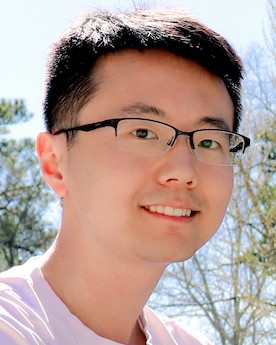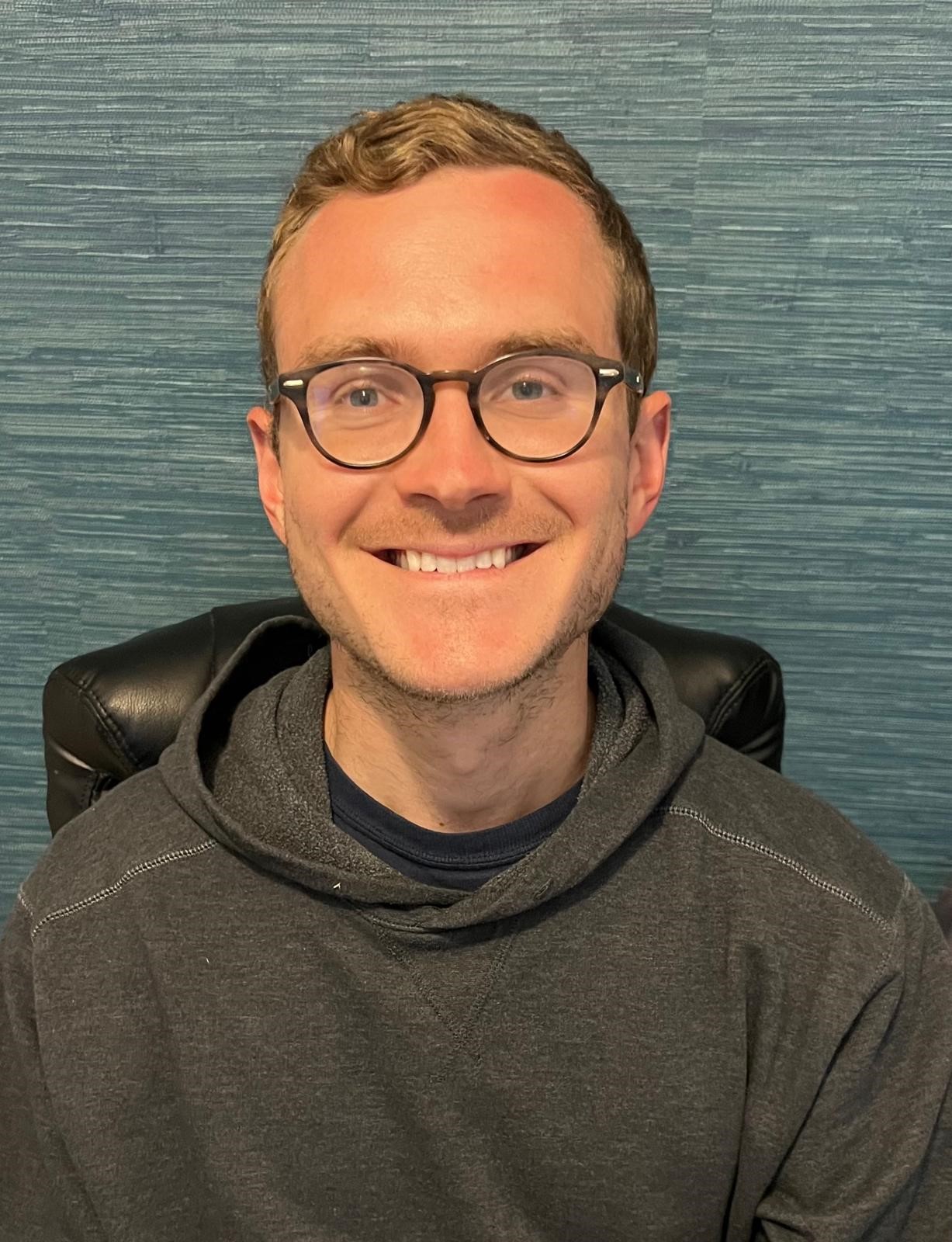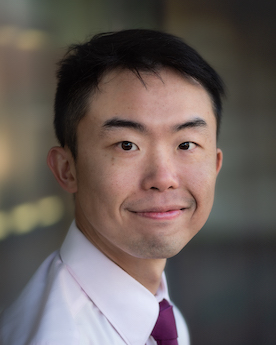
University of California, Berkeley
Appointed in 2017
Read more
University of California, Berkeley
Appointed in 2017
Defining the protective role of the mitochondrial stress response in aging
Aging is a risk factor for nearly every chronic disease, and organismal health in aging and age-related disorders is increasingly linked to mitochondrial health. A key contributor to age-related mitochondrial dysfunction is the accumulation of misfolded proteins (or proteotoxic stress). Recent evidence has shown how proteotoxic stress can activate the unfolded protein response in mitochondria (UPRmt), a conserved stress response pathway critical for regulating longevity. However, the molecular mechanisms underlying UPRmt activation and lifespan extension during aging remain unknown. The objective of this proposal is to_x000D_
identify a framework for how mitochondria recognize and respond to proteotoxic stress, which will inform how stress response mechanisms become compromised during aging. First, we will investigate how age associated proteotoxic stress activates the UPRmt and how this mechanism becomes compromised during aging. Secondly, we will conduct a focused RNAi screen to discover novel downstream effectors of the UPRmt that are essential for protecting lifespan upon proteotoxic stress. By establishing the relationship between the UPRmt and proteotoxic stress in aging, we will gain a fundamental understanding of the molecular basis of mitochondrial aging. This will establish new realms of therapeutic intervention that directly target the underlying cause of nearly every chronic disease – getting older.


Columbia University
Appointed in 2005
Regulation of exocytosis


Harvard University
Appointed in 1988
Molecular analysis of chromosomal imprinting in mice


Cleveland Clinic Foundation
Appointed in 1999
Eosinophils, DNA damage and breast cancer


Stanford University
Appointed in 1973
Nature of SV40-induced T antigen

University of California, San Francisco
Appointed in 2001
Read more
University of California, San Francisco
Appointed in 2001
Biochemical analysis of mRNA localization in yeast

University of Colorado, Anschutz Medical Campus
Appointed in 2019
Read more
University of Colorado, Anschutz Medical Campus
Appointed in 2019
Structural Basis for Noncanonical Translation Initiation in Viruses
My postdoctoral research is focused on structured viral RNAs involved in enhancing translation of viral proteins. Some of the RNAs I’m studying are able to induce a reinitiation event within the viral RNA genome through specific interactions with the ribosome. My research focuses on the determining the molecular interactions that enable this RNA structure to promote translation activity at downstream open reading frames following a translation termination event. Another set of RNAs I’m studying are found primarily in plant viruses and mimic cellular tRNAs. Previous and ongoing studies in the Kieft lab aim to determine how different examples of these tRNA-like structures fold, the structural and functional differences between different classes and subtypes, and how these RNAs enhance viral translation.


University of Oregon
Appointed in 1990
Crystallographic studies of the BirA protein

National Institute for Medical Research, England
Appointed in 1979
Read more
National Institute for Medical Research, England
Appointed in 1979
Molecular mechanisms in the B-thelassemias

University of California, Berkeley
Appointed in 2023
Read more
University of California, Berkeley
Appointed in 2023
Predicting the speed and accuracy of CRISPR-Cas genome editing
CRISPR-Cas enzymes are versatile tools for gene editing and research applications such as transcriptional regulation and imaging. The speed and accuracy of CRISPR-Cas enzymes are crucial, yet how they identify a unique ~ 20-base-pair target within billions of base pairs in the genome is still unclear. Dr. Honglue Shi aims to obtain a more quantitative and predictive understanding of how natural and engineered CRISPR-Cas enzymes rapidly and accurately target specific DNA sequences in Dr. Jennifer Doudna’s lab at the University of California, Berkeley. Shi will use structure-guided biochemistry to develop a kinetic model for CRISPR-Cas9 search speed and accuracy. He will then test the generality of the model on additional CRISPR enzymes and ancestral RNA-guided TnpB enzymes. This research is fundamental to understanding both the evolutionary history of RNA-guided enzymes and the utility of these systems for genome editing. In the future, these results will enable predictions and design of genome editing functions that are not possible or practical today and will greatly accelerate the field as well as the precision and outcomes of next-generation genome editing tools.
As a Ph.D. student in Dr. Hashim Al-Hashimi’s lab at Duke University, Shi focused on the development of biophysical approaches such as NMR spectroscopy to extend the description of nucleic acids from static structures to dynamic ensembles, which results in a deeper and more predictive understanding of how nucleic acids are being recognized by other biomolecules. Having developed this expertise in nucleic acid biophysics and perspectives in dynamic ensembles, Dr. Shi is ready to elucidate the properties that define the best genome editors in Dr. Doudna’s lab.

Harvard University Medical School
Appointed in 1989
Read more
Harvard University Medical School
Appointed in 1989
Activation of cdc 2/cyclin kinase during meiosis in the surf clam

Oklahoma Medical Research Foundation
Appointed in 1995
Read more
Oklahoma Medical Research Foundation
Appointed in 1995
Role of phosphorylation in eukaryotic mRNA synthesis


Yale University
Appointed in 2004
Multivesicular bodies in dendritic cell function


Princeton University
Appointed in 1995
Melanocyte development in mice

MRC Center, University Medical School, England
Appointed in 1982
Read more
MRC Center, University Medical School, England
Appointed in 1982
Structure and regulation of yeast mating-type genes

Massachusetts Institute of Technology
Appointed in 2024
Read more
Massachusetts Institute of Technology
Appointed in 2024
Understanding tissue damage in the pre-neoplasia to neoplasia transition of colorectal cancer
Tissue regeneration, in a normal developmental context, and cancer are both forms of cellular proliferation. However, tissue regeneration is regulated and responsive to the surrounding environment, whereas cancer sheds these restraints. Understanding the commonalities and the differences between tissue regeneration and cancer may provide insight into novel avenues for cancer therapeutics.
Dr. Bing Shui will investigate the role of tissue damage in facilitating the early pre-neoplastic to neoplastic transition in colorectal cancer in Dr. Tyler Jacks’ lab at the Massachusetts Institute of Technology. Dr. Shui will examine how tissue damage cooperates with oncogenic mutations to initiate cancer. He will also compare damaged mutant and wildtype cells to identify vulnerabilities that can be leveraged to selectively destroy precancerous cells. Ultimately, a better understanding of the role of tissue damage in this early precancerous transition may reveal novel prophylactic cancer treatments.
Shui’s interest in the relationship between tissue regeneration and cancer burgeoned in Dr. Kevin Haigis’ lab at Harvard University. During his Ph.D. studies, he examined the role of microRNAs (miRNAs) in colon regeneration and colon cancer. First, Shui demonstrated that miRNAs are required for tissue regeneration and miRNA suppression exacerbated colon damage due to failed regeneration. Next, he examined the role of miRNAs in colon cancer and discovered a novel form of posttranslational regulation mediated by oncogenic K-Ras that governs global miRNA function. Now Shui will use his expertise in tissue damage and regeneration to identify vulnerabilities in colorectal cancer during his postdoctoral research.

Frederick Cancer Research Facility
Appointed in 1982
Read more
Frederick Cancer Research Facility
Appointed in 1982
Phage and bacterial regulatory mechanisms


Harvard University
Appointed in 1979
Maltose and maltodextrin transport in E. coli


Stanford University
Appointed in 1972
Purification and characterization of mRNA coding for myeloma patients


Columbia University
Appointed in 2000
Molecular mechanism of synapse specific targeting of EF1-a and its role in synaptic growth


Carnegie Institute for Science
Appointed in 2012
Metabolic transitions during Drosophila oogenesis


University of Wisconsin
Appointed in 1972
The interaction of promoters and transcription factors

Max-Planck Institute /
University of California
Appointed in 1988
Read more
Max-Planck Institute / University of California
Appointed in 1988
RNA localization in Drosophila development

University of Cologne, Germany
Appointed in 1982
Read more
University of Cologne, Germany
Appointed in 1982
Idiotype regulation of the immune response


Institut Pasteur, France
Appointed in 1965
Operon expression and lysogeny


Harvard University
Appointed in 1975
Periplasmic protein secretion in E. coli


Stanford University
Appointed in 2010
Neural integration of visual information in the Drosophila brain
My current research interest is visual system function in fruit flies. I want to understand how different behaviorally relevant visual cues, such as motion or polarized light information, are processed in the Drosophila brain.
I am from Germany. I studied biology and chemistry at the University of Münster, where I worked in a plant pathology lab as an undergraduate; I also did internships at Washington State University and Edinburgh University.  During that time I became interested in neuroscience and subsequently studied the development of the nervous system for my diploma thesis and PhD at the Department of Neurobiology in Münster. I used the fly embryonic peripheral nervous system to study how neurons and glial cells communicate in order to coordinate axonal outgrowth with glial cell migration. For my postdoc I switched from developmental to functional aspects of neuroscience. Outside the lab, I enjoy exploring the Bay area on my road bike or hiking, and meeting friends.


New York University
Appointed in 1970
Protein synthesis in Artemia salina

Princeton University
Appointed in 2021
Read more
Princeton University
Appointed in 2021
Small protein modules dictate prophage fates during polylysogeny
DNA-damaging agents are the pervasive inducers of temperate phages in model bacteria. Most bacteria in the biosphere are polylysogens, harboring multiple prophages. Thus, how co-residing prophages compete for cell resources if they all respond to an identical trigger is unknown. My project in the Bassler Lab is focused on the discovery of regulatory modules that control prophage induction independently of the DNA damage cue. The modules I uncovered lack sequence similarity but share regulatory logic by having a transcription factor that activates the expression of a neighboring gene encoding a small protein. The small protein inactivates the master repressor of lysis, leading to induction. Polylysogens harboring two prophages exposed to DNA damage release mixed populations of phages. Single-cell analyses reveal that this blend is a consequence of discrete subsets of cells producing one, the other, or both phages. By contrast, induction via the DNA-damage-independent module results in cells producing only the phage sensitive to that specific cue. Thus, in the polylysogens tested, the cue used to induce lysis determines phage productivity. Considering the lack of potent DNA-damaging agents in natural habitats, additional phage-encoded sensory pathways to lysis could play fundamental roles in phage-host biology and inter-prophage competition.

University of Edinburgh, Scotland
Appointed in 1970
Read more
University of Edinburgh, Scotland
Appointed in 1970
Biochemistry and genetic characterization of certain E. coli mutants

National Institutes of Health
Appointed in 1974
Read more
National Institutes of Health
Appointed in 1974
Translation of SV40 messenger RNA

Harvard University Medical School
Appointed in 1987
Read more
Harvard University Medical School
Appointed in 1987
Trans-regulation by the Drosophila bithorax complex


Yale University
Appointed in 2003
Structural study of cotranslational translocation

University of California, San Francisco /
Stanford University
Appointed in 1993
Read more
University of California, San Francisco / Stanford University
Appointed in 1993
A novel method for mutagenesis of a cloned gene

Massachusetts Institute of Technology
Appointed in 1984
Read more
Massachusetts Institute of Technology
Appointed in 1984
Mammalian transcriptional regulatory proteins and their genes

Johns Hopkins University School of Medicine
Appointed in 2018
Read more
Johns Hopkins University School of Medicine
Appointed in 2018
Defining mechanisms for selective translation in ribosomopathies
Translational elongation is a tightly regulated process, whose dysfunction triggers cellular quality control (QC) processes that minimize production of defective protein molecules. Aberrantly stalled ribosomes on messenger RNAs (mRNAs) disrupt translational homeostasis and arise as a consequence of inefficient decoding, defective mRNAs, and cellular insults, such as stress and starvation. As such, the primary role of co-translational QC is to initiate ribosomal rescue by splitting the ribosomal subunits, triggering mRNA decay, and enabling recycling of the subunits for new rounds of translation. _x000D_
The molecular cues required to initiate ribosomal QC (RQC) are poorly characterized, as are the fate of ribosomes affected by RQC. Using a combination of biochemical, mass-spectrometric and ribosome profiling approaches, I am studying how QC factors spatiotemporally recognize and resolve stalled ribosomes and how such factors discriminate terminally (or “dead end”) stalled ribosomes on defective mRNAs, from transiently paused ribosomes on elongation-limited transcripts. _x000D_


Yale University
Appointed in 1993
Understanding the DNA recognition and cleavage characteristics of Phenanthrenequinone Dilimine complexes of Thodium (III)

University of California, Berkeley
Appointed in 1973
Read more
University of California, Berkeley
Appointed in 1973
Factor controlling RNA chain initiation in lambda


University of Arizona
Appointed in 2002
A single-molecule study of co-translational protein folding

Massachusetts Institute of Technology
Appointed in 1970
Read more
Massachusetts Institute of Technology
Appointed in 1970
Mechanism of messenger RNA transport from the nucleus to the cytoplasm of the cleaving sear urchin embryo


Purdue University
Appointed in 1986
X-ray crystal structure of rhinovirus/antibody and receptor protein complexes

University of North Carolina
Appointed in 1987
Read more
University of North Carolina
Appointed in 1987
Structural studies of intermediate state hemoglobins


Boston Children's Hospital
Appointed in 2013
DNA elements within BCL11A and its target sequences in globin switching
This project aims to identify cellular mechanisms contributing to elevation of fetal hemoglobin (HbF, ?2?2) levels, the most promising therapy for patients with sickle cell disease. The characterization of BCL11A, a repressor of HbF production, and potential BCL11A targets within the ?-globin locus, will impact therapy design and treatment of the major hemoglobin disorders whose global health burden is rising. Although BCL11A is dispensable for normal red cell function, studies in mice have determined that it is required for development, presenting a potential obstacle for therapies designed to inhibit BCL11A function by small molecule. Aim1 will determine the dependence of BCL11A erythroid expression on a single nucleotide polymorphism dense region, identified by genome wide association studies. Aim2 will identify a region required for ?-globin gene repression within the A?-? intergenic region of the ?-globin locus. Both aims will utilize DNA targeting of mouse embryonic stem cells and analysis of BCL11A expression and/or globin gene expression in fetal and adult mice. These studies will contribute to a fuller understanding of ?-globin gene regulation, provide in vivo models for molecular characterization of hemoglobin switching, and identify erythroid specific targets for therapeutic intervention.

Institute for Cancer Research
Appointed in 1981
Read more
Institute for Cancer Research
Appointed in 1981
Expression of immunoglobulin variable region genes in T cells

California Institute of Technology
Appointed in 2006
Read more
California Institute of Technology
Appointed in 2006
Modeling the cytochrome P450 enzyme superfamily

International Laboratory of Genetics and Biophysics, Italy /
Institut de Biologie Physico-Chimique, France
Appointed in 1968
Read more
International Laboratory of Genetics and Biophysics, Italy / Institut de Biologie Physico-Chimique, France
Appointed in 1968
Mechanism of RN synthesis by RNA polymerase


Duke University
Appointed in 2023
Determining how basement membranes stretch and recover to support tissues
Dr. Adam Wei Jian Soh will investigate how the basement membrane (BM), a sheet-like extracellular matrix that encloses tissues, stretches in mechanically-active tissues in Dr. David Sherwood’s lab at Duke University. Dr. Soh will use C elegans ovulation as a novel model system for examining BM stretching and recovery. Soh has performed a localization screen and identified candidate proteins that are likely important for BM dynamics. He will follow up on these findings by determining which proteins are functionally important for the stretching and recovery of BMs. Soh hypothesizes that type IV collagen is critical for stretching tissues as genetic defects in this gene lead to vasculature hemorrhaging and muscle dysfunction. This research may also identify novel genes that are critical for tissue support and are mutated in human disease.
Previously, Dr. Soh investigated the mechanics of motile cilia beating as a PhD student in Dr. Chad Pearson‘s lab at the University of Colorado Anschutz Medical Campus. Specifically, he discovered a novel intracellular mechanism involving the cortical cytoskeleton network that regulates cilia beating synchronization. Through this research Soh developed expertise in imaging techniques and cellular biophysics. This experience has prepared Dr. Soh for his current project dissecting basement membrane dynamics.


Yale University
Appointed in 1947
Liver fractions with glycogenolytic properties


Brandeis University
Appointed in 2000
Electron microscopy of a voltage-gated ion channel


Yale University
Appointed in 1983
Signals for RNA splicing

University of California, San Francisco
Appointed in 1997
Read more
University of California, San Francisco
Appointed in 1997
Protein kinase C in thymocyte selection